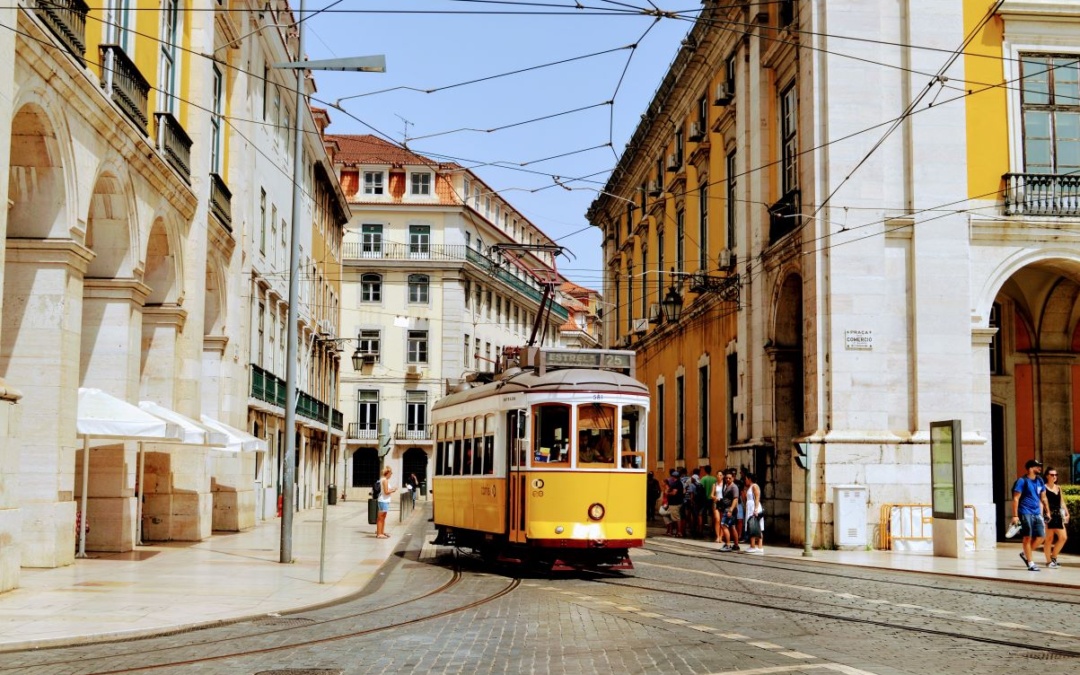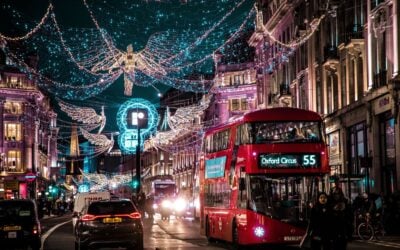Would you like to leave everyday life behind and gather new impressions while travelling? It is often the same for us. We love to explore different places and let the culture of other countries affect us. We also like to travel as sustainable as possible.
Here are some of the most beautiful cities in Europe, which are absolutely worth seeing and sustainable.
City Breaks in Europe: These Reasons Speak for It
A holiday is always very individual. Sometimes you are drawn out into a tiny house in the countryside, at other times, you want to enjoy absolute silence on a retreat holiday, and then there are days when you want to experience and see as much as possible.
No question, every trip has its own charm. The list of cities below is recommended for three reasons:
- Sustainable arrival: If you take a city break in Europe, you save on any additional long-haul flights and thus also CO2. Most of the time, you can even do without the plane altogether – after all, cities are usually easy to reach by train.
- “Only a short time away”: Vacation days are limited – and thus also the days off on which you can travel. The nice thing about a city break in Europe is that a long weekend is enough to see new things and collect great memories. If you travel from Thursday to Sunday, you only have to take two days off, but you can take a four-day vacation.
- Wide range of cultural activities: From theatre to events to a diverse gastronomic scene – cities have a lot to offer. There is something for everyone. You can decide for yourself what and how much you want to experience.
Top 5: The best cities for sustainable holidays
Here are the most beautiful European cities that pave the way to a greener future and are ideal for a city break in Europe:
#1 Rotterdam
Kayak has created a ranking so that responsible travellers know where they can vacation in the most sustainable way. The list covers 70 European cities and considers factors such as public, greener transport, the availability of hotels with sustainable credentials, and the provision of experiences that help the environment and local community.
Rotterdam takes first place here. In recent years, the Dutch city has developed into an innovative eco-city with its own harbour charm. Here, unusual, modern architecture meets Dutch cosiness – with a range of experiences that leave a minimal carbon footprint. Stroll through small boutiques, marvel at the bright yellow cube houses by architect Piet Blom, take a harbour tour or sit on a typical Dutch terrace with an Amstel and let the hustle and bustle sink in.
#2 Copenhagen
Copenhagen is known as one of the most sustainable cities. In 2014, it even received the title of European Green Capital. Scandinavians are committed to becoming the world’s first carbon-neutral capital by 2025. It is particularly evident in the street scene: the Danes rely on bicycles.
It goes without saying that you should explore this city by bike. And find out that there are great bike paths, fortunately only a few roads with inclines and for those who like it even more comfortably, there are enough e-bike rentals.
#3 Lisbon
A city trip in Europe – and still in the countryside. That is possible in Lisbon. Countless parks ensure you feel connected to Mother Earth, even though you are in the middle of the action. For example, Parque Eduardo VII, known for its greenhouses, or the Gulbenkian Gardens, which combine culture and nature and invite you to art museums and theatres.
Or you can enjoy the botanical diversity in the “green heart of Lisbon” – the Parque Florestral de Montsanto – which has a green area of 800 hectares and thus offers enough space for a picnic under the trees.
How did you get here? Quite simply, by bike. Or by tram. It is particularly popular in Lisbon, and with its old, picturesque style is also a real sight. An insider tip is line 28 from St. Georgs-Burg. It drives you ten kilometres through the most beautiful areas of the city.
Speaking of the city: You don’t have to be in the park to feel the green mindset in Lisbon. Above all, the gastronomy scene focuses on sustainability with seasonal, regional dishes. What you shouldn’t miss: the LX Factory, a creatively revived factory site that stood empty for many years and has now been brought back to life – with culinary highlights and street art by local artists.
#4 Ljubljana
When you think of city breaks in Europe, you first have the big metropolises in mind. There are some “hidden gems” such as Ljubljana. Slovenia’s capital will inspire you with a cityscape that is not only historically valuable but also absolutely clean. Avoiding waste plays a major role here. Ljubljana is the first European city to commit to a zero-waste target. That means for your city trip: If you forgot your hair care products, you can easily fill up new shampoo at a machine.
The next special sustainability factor: Since 2008, Ljubljana’s city centre has been completely closed to traffic. For you, this means that you can stroll through the city in a relaxed manner and examine all the sights in peace. Or you can jump on the ” Urban”. It is a small e-tourist train that takes you from the town hall to Ljubljana Castle along all the hotspots.
#5 Stockholm
It is back to Scandinavia. But this time to Sweden, or more precisely: to Stockholm. This city is known for its historical architecture, proximity to the water and the “hyggelig” charm that all the cafés and public squares exude.
You can get from A to B with the electric bus, which connects all parts of the city and drives from island to island. If you look out of the window, you will quickly understand why the city is also called “Venice of the North”: You go over a few bridges, winding streets and past classic house facades.
The e-buses should help Stockholm to be CO2-neutral by 2040. A goal that doesn’t seem so impossible: Since 1990, carbon dioxide emissions per citizen have been reduced by 25%. Stockholm is also committed to fighting energy waste. For example, the heat generated in data centres is used. According to this, 140,000 apartments are to be “heated with the Internet”. Sounds like science fiction? Somehow. So it’s no surprise that Stockholm has the title of “the smartest city in the world” (source: Euronews ).
Our Final Word
We try to travel as sustainable as possible. It can be difficult, especially coming from the US to Europe. But it can be done. After arriving in Europe, take the train. Stay in hotels that advertise their sustainability. Take an e-bus. Walk. There are many ways to be more sustainable. Many European cities are so far advanced compared to US cities it is incredible to see and gives us hope. We only have one Earth, let’s try to save it.
Related Posts
Frugal Festivities: Tips for Saving Money While Traveling Over the Holidays
Frugal Festivities offers practical tips for saving money during holiday travels. Discover how to find budget-friendly accommodations, cheap flights, and affordable festive activities. Learn to celebrate the holiday season without breaking the bank, ensuring a joyful and financially stress-free holiday journey.
The Human Connection: Why We Should Care About People We Meet on Our Travels
“The Human Connection” explores the profound impact of human interactions during travels. It emphasizes the importance of embracing local cultures, understanding diverse perspectives, and forming meaningful connections. This post encourages readers to see beyond tourist spots and delve deeper into the heart of the places they visit, through the people they meet.
The Ultimate Guide to the Best Christmas Destinations
Discover the magic of the holiday season with our ultimate guide to the best Christmas destinations. Explore enchanting markets, festive light displays, and unique traditions around the world. From snowy European towns to tropical beach retreats, we’ve got the perfect holiday travel suggestions for every type of traveler.











0 Comments